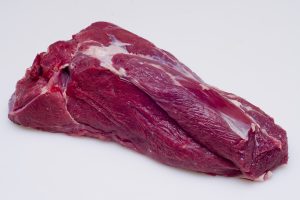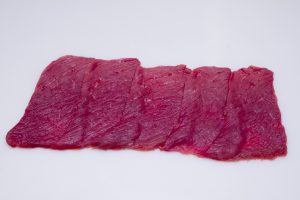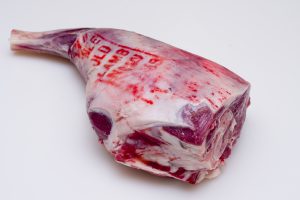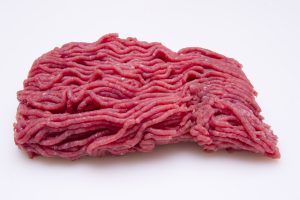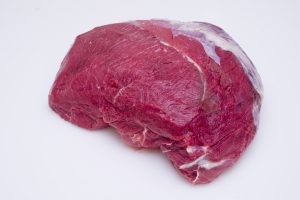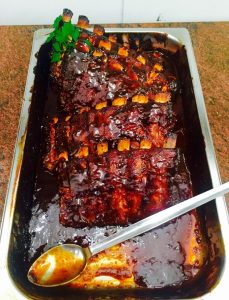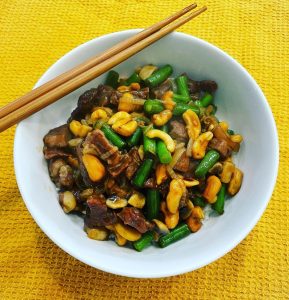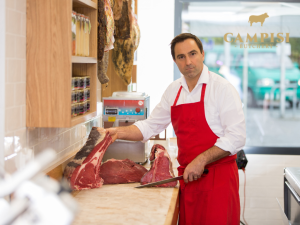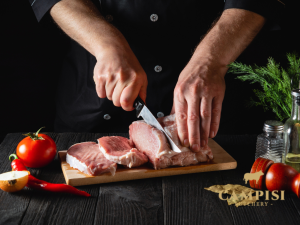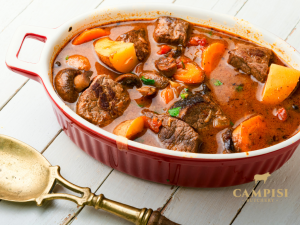Choosing free-range meat isn’t just a culinary preference, it’s a commitment to healthier and more ethical eating practices. Free-range meats are known for their superior nutritional profile, including lower fat content and higher levels of beneficial omega-3 fatty acids. Beyond personal health, opting for free-range signifies a stand against the industrialized farming practices that often prioritize efficiency over animal welfare. Free-range animals are raised in more natural environments, leading to ethical benefits that resonate with conscious consumers.
Distinguishing the Craft: What Makes Free-Range Butchers Unique
A Cut Above the Rest
Free-range butchers are artisans in their own right, set apart by their dedication to quality and sustainability. These butchers often source their meat from local farmers who adhere to strict free-range farming standards, ensuring animals are raised in open, natural environments. This approach not only supports local economies but also guarantees a level of freshness and quality that mass-produced meats can’t match. Free-range butchers are also knowledgeable guides, offering insights into the origins of the meat, as well as advice on selection and preparation.
Mastering the Art of Selection: Quality Free-Range Meat
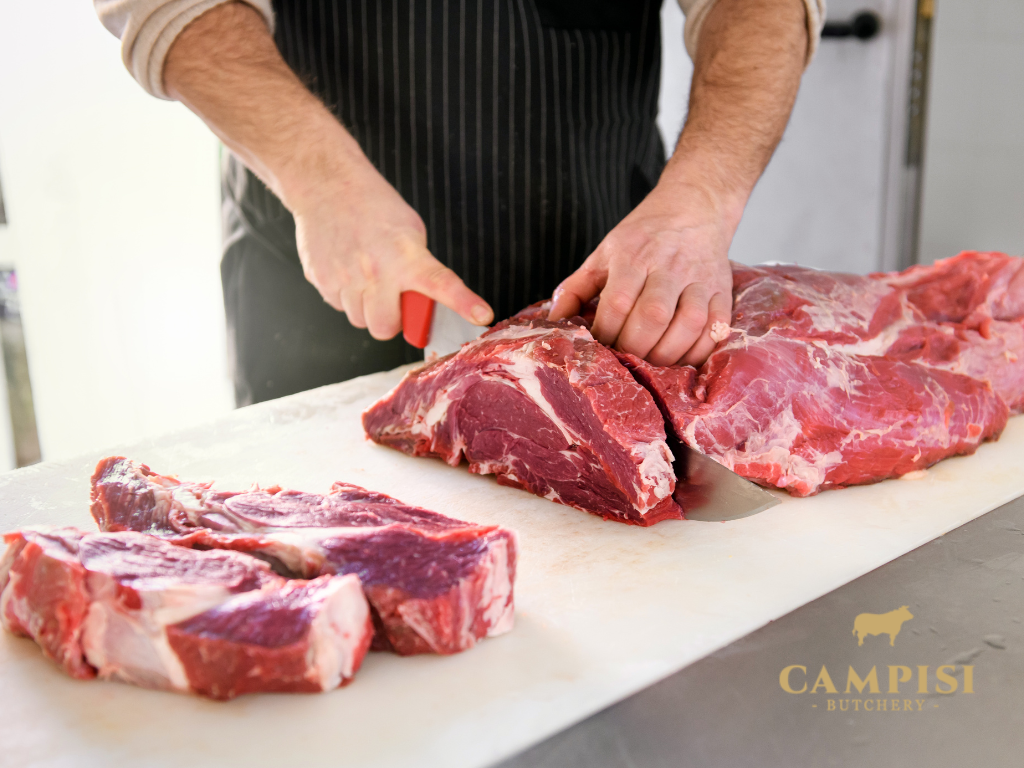
Reading Nature’s Clues: Visual and Textural Markers of Premium Meat
When it comes to selecting quality free-range meat, your eyes and hands are invaluable tools. Look for meat that has a vibrant, natural color – a hallmark of freshness. The texture should be firm to the touch, with a consistent grain and marbling that promises flavor and tenderness. Free-range meats often have a more pronounced and natural color due to the varied diets and active lifestyles of the animals.
Inquisitive Minds: Questions to Elevate Your Meat Experience
Gaining the most from your free-range meat purchase involves asking the right questions. Inquire about the source of the meat – where was it raised, and what practices were followed? Understanding the feed and lifestyle of the animals, such as whether they were grass-fed or had access to open pastures, can provide insights into the quality and flavor profile of the meat. Knowledgeable butchers can also offer cooking tips specific to each cut, enhancing your culinary experience.
Unraveling the Tapestry of Labels and Certifications
Beyond the Label: Decoding Free-Range Terminologies
The world of meat labels can be perplexing, with terms like “organic,” “grass-fed,” and “free-range” often used interchangeably, despite their distinct meanings. Organic refers to meat from animals raised without synthetic pesticides or hormones, while grass-fed indicates animals that have grazed naturally. Free-range, however, typically implies that the animals had access to the outdoors, providing a more natural and humane living condition. Understanding these nuances can guide you in making informed choices aligning with your preferences and values.
The Seal of Trust: Understanding the Weight of Certifications
Certifications play a crucial role in validating the claims made by free-range meat producers. Recognized certifications ensure that the meat has met specific standards related to animal welfare, feeding practices, and environmental impact. These might include certifications from agricultural authorities or independent organizations dedicated to humane farming practices. When you choose meat with these certifications, you are not only getting a quality product but also supporting responsible and sustainable farming practices.
Navigating the Art of Meat Selection: Free-Range Edition

Curating the Perfect Cut: Matching Meat to Method
Choosing the right cut of free-range meat is essential for achieving culinary excellence. Different cooking methods call for different types of cuts. For slow cooking or braising, look for tougher cuts like shoulder or brisket, which become tender and flavorful over long cooking periods. For quicker methods like grilling or frying, opt for tender cuts such as fillets or rib-eye. Understanding the cooking properties of each cut ensures that every meal is not just a dish but a masterpiece.
The Flavor Enhancers: Aging and Grading of Meat
Aging and grading are critical factors that impact the flavor and tenderness of meat. Aging allows natural enzymes to break down muscle fibers, enhancing tenderness and depth of flavor. There are two types of aging: wet and dry. Wet aging is done in vacuum-sealed bags to retain moisture, while dry aging is done uncovered, resulting in a more intense flavor. Grading, on the other hand, assesses the quality of meat based on marbling, color, and texture, guiding consumers to make premium choices.
Financial Wisdom: Embracing Free-Range Within Budget
Understanding the Premium: The Price of Ethical Choices
Free-range meat often comes with a higher price tag, a reflection of the more natural and humane farming practices. These methods are typically more labor-intensive and require more land per animal, contributing to higher costs. Additionally, the absence of hormones and antibiotics, coupled with organic feed, further elevates the price. While more expensive, this investment supports ethical farming practices and offers a healthier and more flavorful product.
Smart Spending: Free-Range Meat on a Budget
Enjoying free-range meat doesn’t have to strain your budget. One strategy is to buy in bulk and freeze portions for later use, as larger quantities often come at a discounted rate. Opting for less popular cuts can also be cost-effective; cuts like thighs or chuck offer great flavor at a lower price. Another tip is to use meat as a complement rather than the centerpiece of your meals, integrating it with vegetables and grains to stretch the quantity.
Mastery in Storage and Preparation: From Butcher to Plate
Preserving Freshness: Storing Free-Range Meat Properly
Proper storage is key to maintaining the freshness and safety of free-range meat. Refrigerate or freeze meat as soon as possible after purchase. In the refrigerator, store meat in the coldest part, ideally in its original packaging or wrapped tightly to prevent air exposure. When freezing, use airtight packaging to avoid freezer burn. Remember to label and date the meat to keep track of freshness.
Culinary Excellence: Preparing and Cooking Free-Range Meat
Cooking free-range meat to perfection involves understanding its unique characteristics. Allow the meat to reach room temperature before cooking to ensure even cooking. Season simply to let the natural flavors shine, and be mindful of cooking times – free-range meat can cook faster due to its lower fat content. Rest the meat after cooking to redistribute juices, ensuring a tender and flavorful experience with every bite.
Fostering Connections: The Value of Your Local Free-Range Butcher
Cultivating a Culinary Partnership: Regular Visits and Their Rewards
Building a relationship with your local free-range butcher can transform your meat-buying experience. Regular visits provide an opportunity for meaningful interactions, allowing you to gain insights into the source and quality of the meat. A trusted butcher can guide you on the best cuts for your culinary needs, share preparation tips, and even alert you to new or special products. This relationship not only enhances your cooking but also enriches your understanding of ethical meat consumption.
Sustaining Communities: The Role of Local Butchers
Choosing a local free-range butcher goes beyond personal benefits; it’s an investment in your community. By supporting local businesses, you help sustain the livelihoods of those who prioritize ethical farming practices. This choice fosters a local food system that values quality and responsibility over mass production. The presence of local butchers often signifies a community’s commitment to preserving traditional culinary arts and promoting sustainable living.
Conclusion
The trend towards ethical meat consumption reflects a growing awareness among consumers about the impact of their food choices. It’s a movement driven by concerns for animal welfare, environmental sustainability, and personal health. As this trend gains momentum, it highlights the evolving relationship between consumers, food producers, and the planet. In this context, making informed choices at the butcher becomes a statement of support for a more sustainable and humane food system.

